Abstract
Thirty-three minimally passaged clinical and environmental isolates of Vibrio cholerae were examined for ability to survive and multiply in the upper bowel of infant mice and to elicit diarrhea. All of 21 smooth O-1 V. cholerae isolates from stool were able to multiply and elicit diarrhea. Three rough strains isolated from stool were unable to multiply or to elicit diarrhea. Two smooth O-1 isolates associated with cholera cases (from a sewer and a septic tank) also were able to cause disease. However, four O-1 strains and one non-O-1 strain from sources not associated with cholera cases did not cause mouse disease. A human gall bladder isolate was also avirulent, whereas a Louisiana shrimp isolated showed low mouse virulence. We conclude that smooth human diarrheal isolates of V. cholerae of serogroup O-1 are virulent for infant mice. Examination of sequential isolates from single patients showed that some strains isolated later in infection had a reduced ability to induce diarrhea. Comparison of epidemiologically related strains showed that an isolate from crab had a low ability to induce disease in infant mice, whereas the isolates from patients showed the expected ability to multiply and elicit diarrhea in mice.
Full text
PDF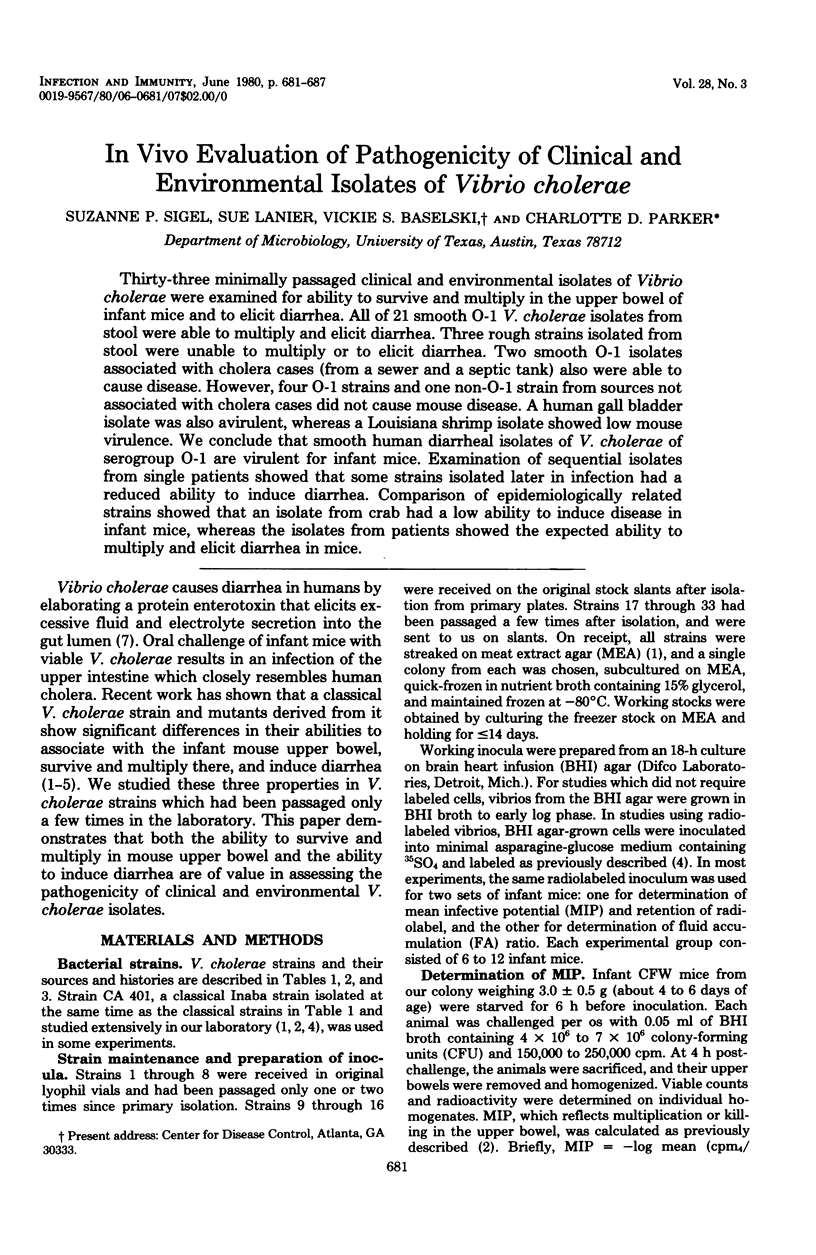
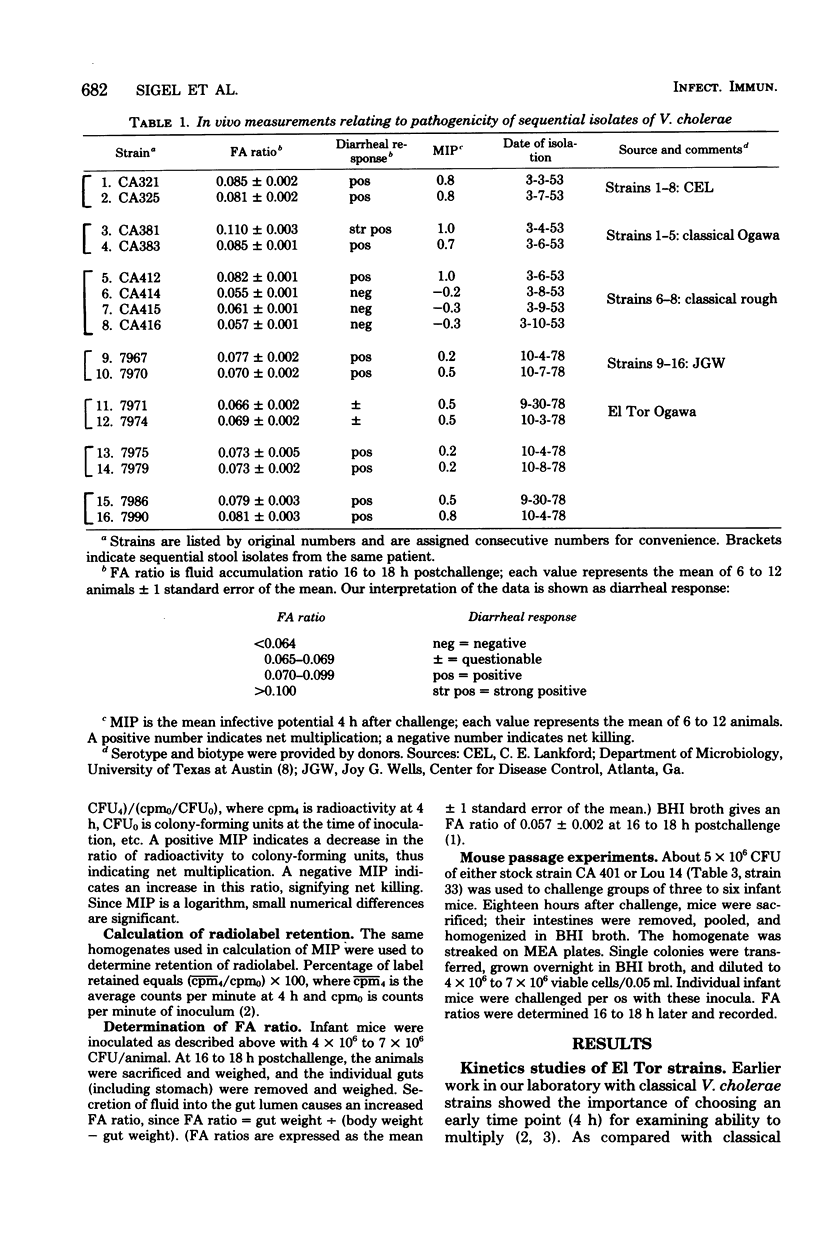
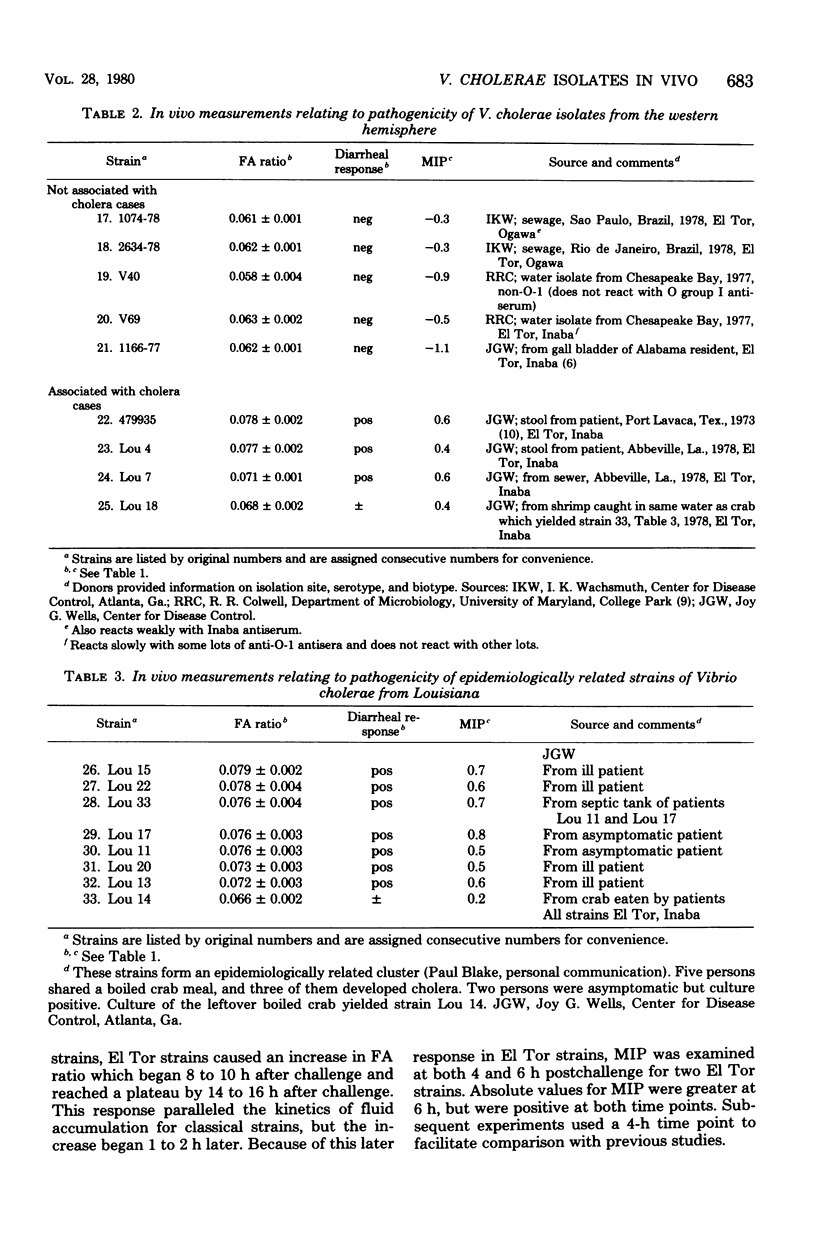
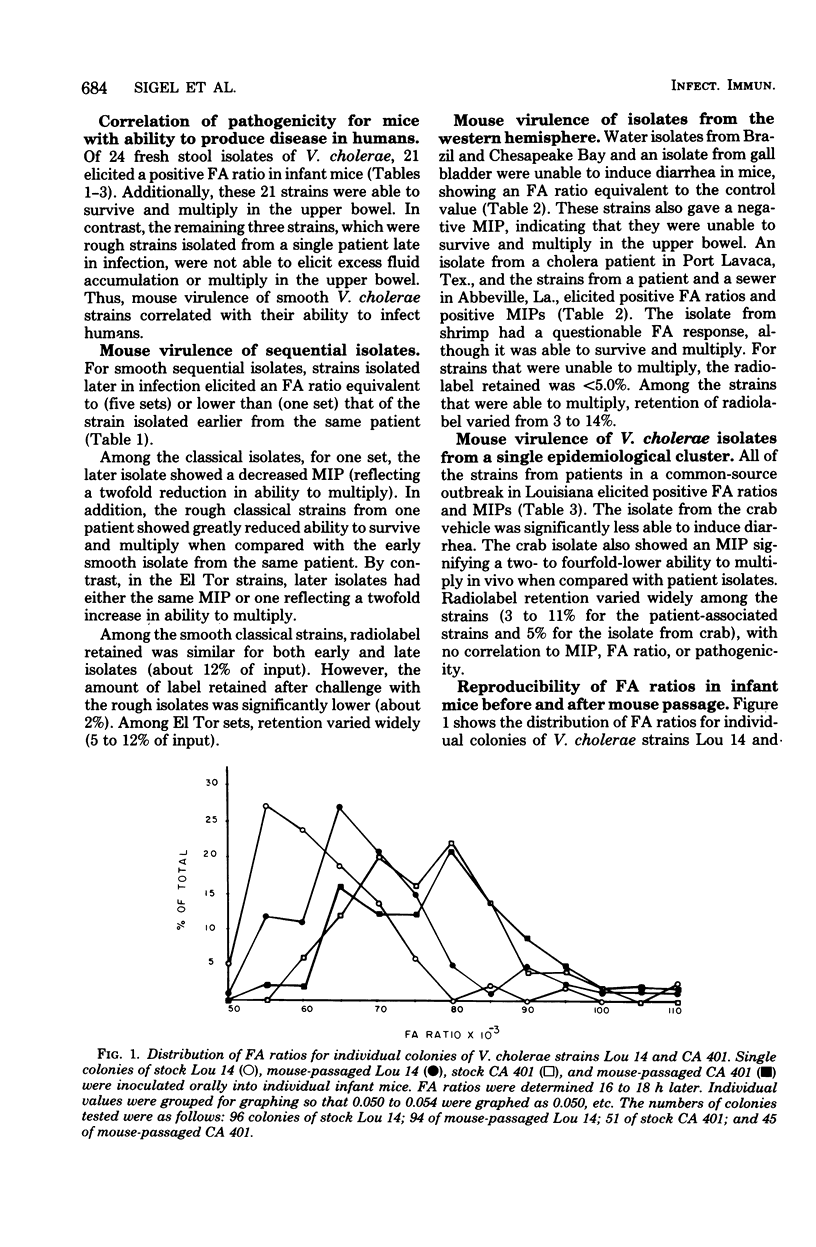
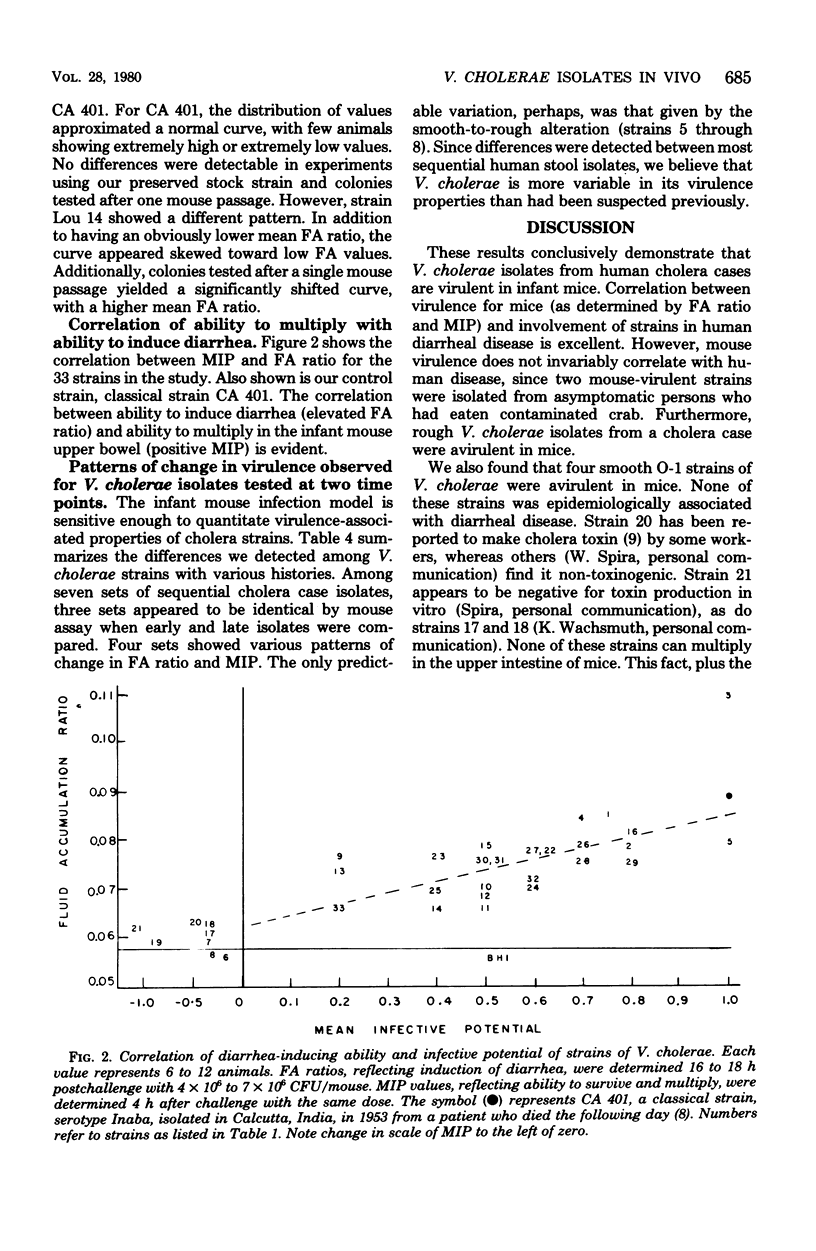
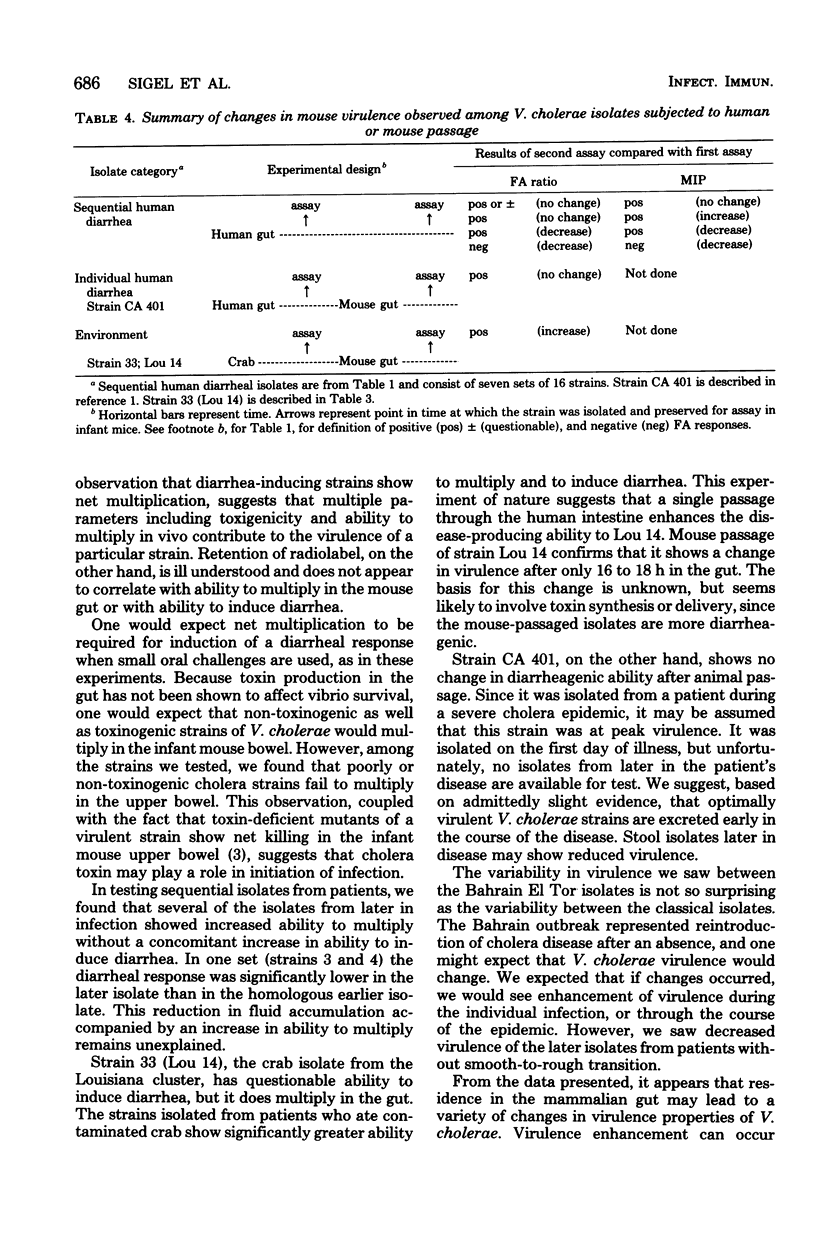
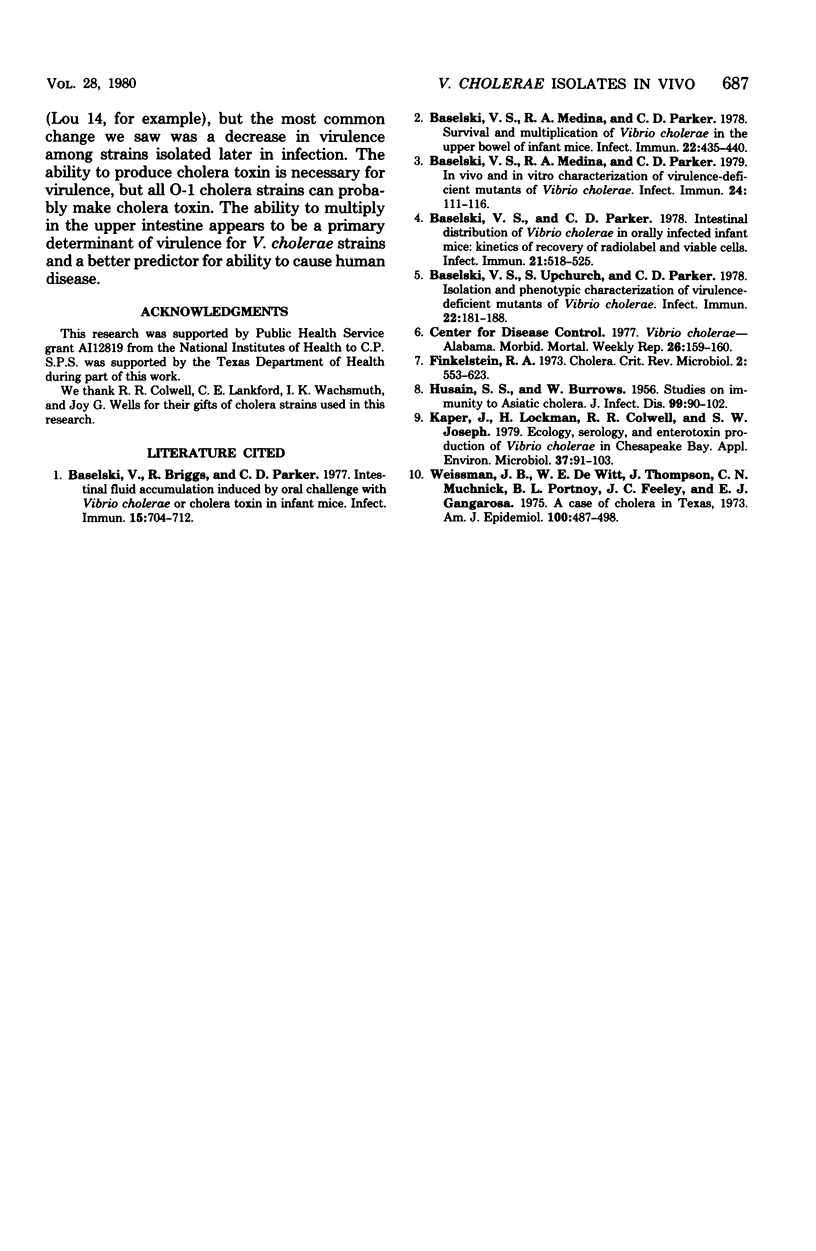
Selected References
These references are in PubMed. This may not be the complete list of references from this article.
- BURROWS W., HUSAIN S. S. Studies on immunity to Asiatic cholera. VIII. The virulence of strains of Vibrio cholerae for the mouse. J Infect Dis. 1956 Jul-Aug;99(1):90–102. doi: 10.1093/infdis/99.1.90. [DOI] [PubMed] [Google Scholar]
- Baselski V. S., Medina R. A., Parker C. D. In vivo and in vitro characterization of virulence-deficient mutants of Vibrio cholerae. Infect Immun. 1979 Apr;24(1):111–116. doi: 10.1128/iai.24.1.111-116.1979. [DOI] [PMC free article] [PubMed] [Google Scholar]
- Baselski V. S., Medina R. A., Parker C. D. Survival and multiplication of Vibrio cholerae in the upper bowel of infant mice. Infect Immun. 1978 Nov;22(2):435–440. doi: 10.1128/iai.22.2.435-440.1978. [DOI] [PMC free article] [PubMed] [Google Scholar]
- Baselski V. S., Parker C. D. Intestinal distribution of Vibrio cholerae in orally infected infant mice: kinetics of recovery of radiolabel and viable cells. Infect Immun. 1978 Aug;21(2):518–525. doi: 10.1128/iai.21.2.518-525.1978. [DOI] [PMC free article] [PubMed] [Google Scholar]
- Baselski V. S., Upchurch S., Parker C. D. Isolation and phenotypic characterization of virulence-deficient mutants of Vibrio cholerae. Infect Immun. 1978 Oct;22(1):181–188. doi: 10.1128/iai.22.1.181-188.1978. [DOI] [PMC free article] [PubMed] [Google Scholar]
- Baselski V., Briggs R., Parker C. Intestinal fluid accumulation induced by oral challenge with Vibrio cholerae or cholera toxin in infant mice. Infect Immun. 1977 Mar;15(3):704–712. doi: 10.1128/iai.15.3.704-712.1977. [DOI] [PMC free article] [PubMed] [Google Scholar]
- Kaper J., Lockman H., Colwell R. R., Joseph S. W. Ecology, serology, and enterotoxin production of Vibrio cholerae in Chesapeake Bay. Appl Environ Microbiol. 1979 Jan;37(1):91–103. doi: 10.1128/aem.37.1.91-103.1979. [DOI] [PMC free article] [PubMed] [Google Scholar]
- Weissman J. B., DeWitt W. E., Thompson J., Muchnick C. N., Portnoy B. L., Feeley J. C., Gangarosa E. J. A case of cholera in Texas, 1973. Am J Epidemiol. 1974 Dec;100(6):487–498. doi: 10.1093/oxfordjournals.aje.a112061. [DOI] [PubMed] [Google Scholar]


